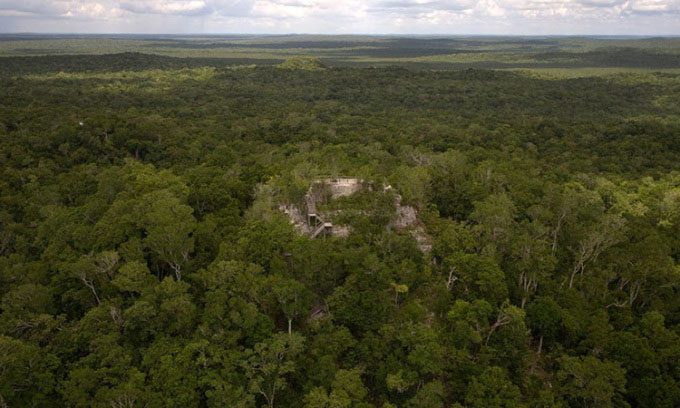American-Guatemalan Scientists Discover the World’s First “Highway” System Connecting Hundreds of Ancient Maya Cities.

A Maya temple at the archaeological site of El Mirador in the jungle of Guatemala. (Photo: Reuters/Daniel Leclair).
The Ancient “Highway” System, stretching approximately 177 kilometers, connects 417 cities and alters our understanding of the Maya Civilization, according to a report by Business Insider on May 22. The discovery of this network of roads and cities, hydraulic systems, and agricultural infrastructure indicates that the communities living in Central America were more advanced than previously believed. The new research was published in the journal of the University of Cambridge.
The ruins are located at the El Mirador archaeological site, situated in a jungle in Guatemala, dating back to 1,000 B.C. and the Preclassic period of the Maya. The Maya were once thought to be a nomadic community, relying on hunting and gathering. This new discovery changes that perception, according to Richard Hansen, the lead author of the study and an archaeologist at Idaho State University.
The forest housing these ruins can only be accessed by helicopter or a 64-kilometer trek, navigating through jaguars and snakes. “Now we know that the Preclassic period was a very complex time with sophisticated architecture, and some of the largest structures in world history were built during this period,” Hansen stated.
The American-Guatemalan research team has been mapping the area since 2015 using Lidar technology—a laser-based archaeological mapping technique—to uncover even the smallest details, such as ancient vegetation. This method has allowed them to identify dams, reservoirs, pyramids, platforms, elevated road networks, and even ancient ball courts.
Archaeologist Enrique Hernández from San Carlos University, a co-author of the study, noted that as they continue deeper research, this could become a historically significant discovery on par with the Egyptian pyramids.


















































